Sweden's summer party season
Some lucky Swedes can attend (at least) three parties during the late summer season as crayfish, fermented herring, and eel all make an appearance during the month of August – with parties in their honor filling up the calendar through early autumn.
-
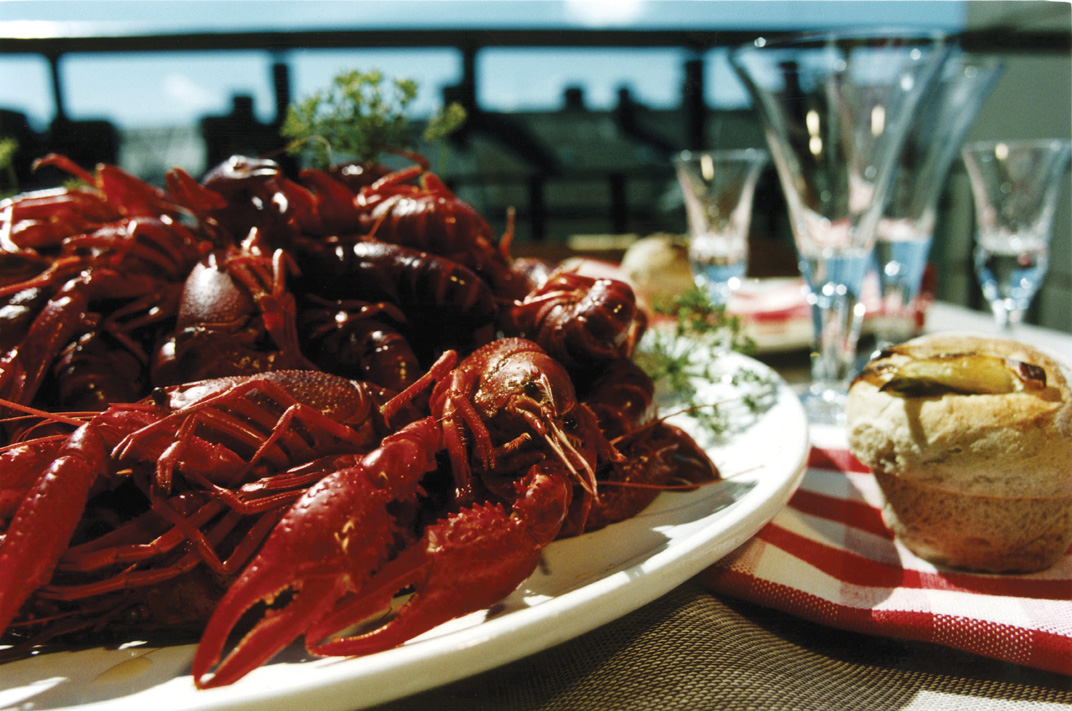 Swedish crayfish, cooked with salt and dill, by many considered well on par with other international delicacies such as goose liver, oysters, truffle..
Swedish crayfish, cooked with salt and dill, by many considered well on par with other international delicacies such as goose liver, oysters, truffle.. -
-
In English, we call a distraction a “red herring,” something intended to divert attention from the real problem. It comes from what we Swedes might assume was the very pungent fermented herring (surströmming) that a boy in London (perhaps a savvy Swedish immigrant) used in the early 1800s to mislead hounds from following a trail … or maybe fugitives used it to cover their tracks and divert the dogs that were in hot pursuit. Whatever the etymology is, the “red herring” served as an extended metaphor for the London press and a popular idiom was born.
In Swedish, a red herring is a cured and salted herring. It even has its own day in Sweden – June 6. You’re not mistaken if you remember that’s also Sweden’s national day. Seems appropriate. Sillens Dag (“the day of the herring”) is actually a day for all herring, or “sill” in Swedish. And there may be as many kinds of sill as there are people who love it – on both sides of the Atlantic.
But fermented herring (surströmming) is a whole other thing. And it has its day in August – sharing the month with crayfish (kräftor) and eel (ål), all of them giving Swedes many mouth-watering (if sometimes also smelly) opportunities to enjoy the bounties of the Baltic. Swedes anticipate the August party season, which exists with the express reason for dining on these fresh water based crustaceous delicacies. -
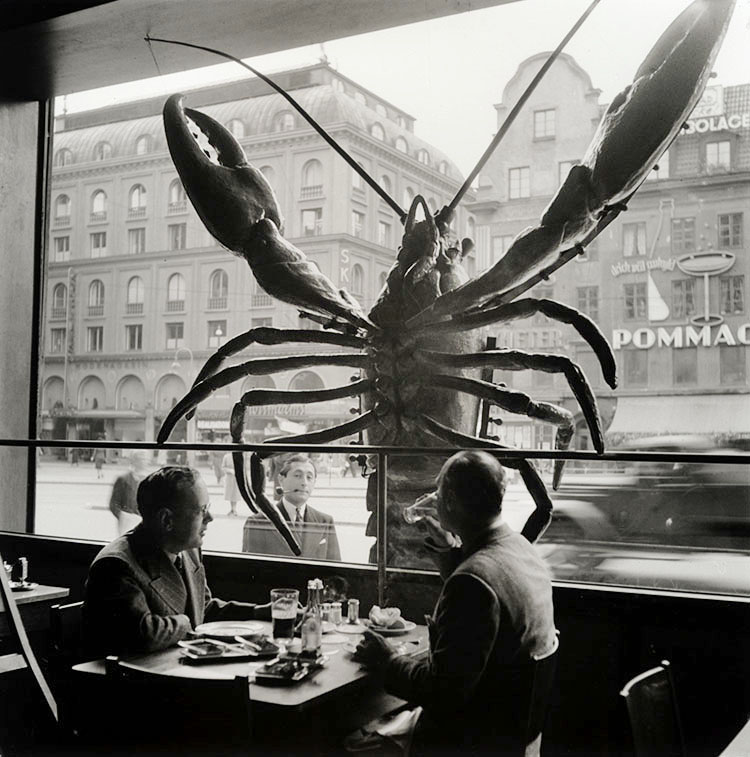 Crayfish Premiere at restaurant Sturehof in Stockholm. Photo: K W Gullers, Nordiska museet.
Crayfish Premiere at restaurant Sturehof in Stockholm. Photo: K W Gullers, Nordiska museet. -
-
Kräftpremiär
The month starts with the premier of the crayfish, AKA “kräftpremiär,” which always falls on August 8. Crayfish season may be the shortest, but it is probably the most popular, beginning two weeks ahead of surströmming season and the “dark days of eel” (ålamörkret).
Years ago the lakes of Sweden teemed with crayfish. They were exported to the ritzy restaurants of Paris, London and Berlin, but over-fishing threatened their existence and regulations were enforced. It wasn’t until 1994 that a ban on fishing for crayfish during certain times of the year was lifted; the last day of the ban was August 7, which made August 8 the first day to start eating them — and the date stuck.
And so did the reason to celebrate. The crayfish party (“kräftskivan”) is a celebration with friends and family, crayfish (served cold with lots of salt and dill) and snaps, special decorations and hopefully a full moon. Eating crayfish the Swedish way often includes side dishes such as crisp bread and cheese, and a variety of equally important rituals, not the least of which includes drinking snaps by the sip (a “nubbe”); some would say the most important part of a crayfish party is the sipping and the singing. Of course drinking responsibly (or drinking water) is advised, but it is often more important to sing (loudly) than to actually drink a lot of snaps, which is also served ice cold and straight up in shot glasses.
Here's how to make your own party at home: Swedish traditions: 'Kräftskivan' -
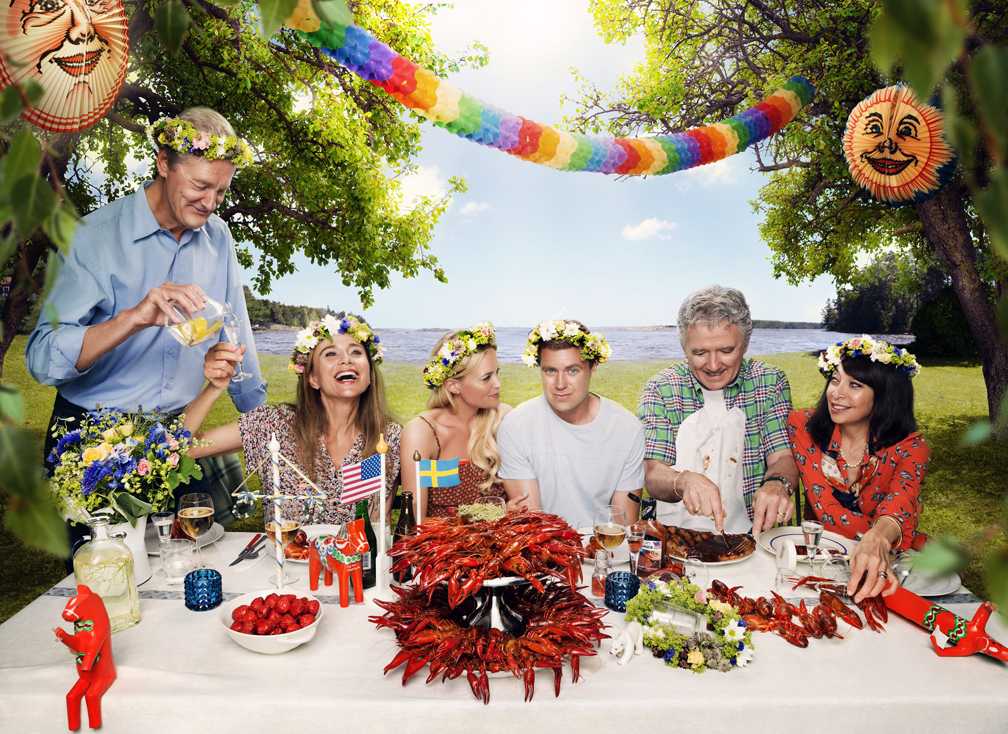 American family members are visiting during a Swedish summer in Season 1 of "Welcome to Sweden." Here, at the crayfish party are (L-R): Claes Månsson as Birger Wiik, Lena Olin as Viveka Wiik, Josephine Bornebusch as Emma Wiik, Greg Poehler as Bruce Evans, Patrick Duffy as Wayne Evans, Illeana Douglas as Nancy Evans. Photo: Linus Hallsenius/NBC
American family members are visiting during a Swedish summer in Season 1 of "Welcome to Sweden." Here, at the crayfish party are (L-R): Claes Månsson as Birger Wiik, Lena Olin as Viveka Wiik, Josephine Bornebusch as Emma Wiik, Greg Poehler as Bruce Evans, Patrick Duffy as Wayne Evans, Illeana Douglas as Nancy Evans. Photo: Linus Hallsenius/NBC -
Surströmmingspremiären
It is with some relief that the premier of fermented herring, AKA “surströmmingspremiären,” is also accompanied by snaps. And singing. Many people are truly grateful for that, since this particular delicacy is sometimes said to taste even worse than it smells. It smells because a) it’s not only the number one smelliest fish in the world but b) it’s also actually fermented. It is unclear how many Swedes actually enjoy this delicacy, but some data suggests half the population has it at least once a year and one percent has it every month.
Surströmmingspremiären is always on the third Thursday in August, so Swedes can make their plans for the next round of parties. This year that’s August 16.
The Baltic herring used for surströmming is caught in spring, just as it is about to spawn. It is fermented in barrels for a couple months, then tinned. Six month later, as that tin is bulging, it is ready to be sold in supermarkets all over the country. Some Swedes are accustomed to eating surströmming with fingerling potatoes and thin bread or diced onion and sour cream, or tomatoes and chopped dill. But they can all agree that opening the can outside, and far from the house, is important. There are plenty of informative (and humorous) accounts on YouTube if you want a tutorial on the art of opening a can of surströmming or how to eat it. -
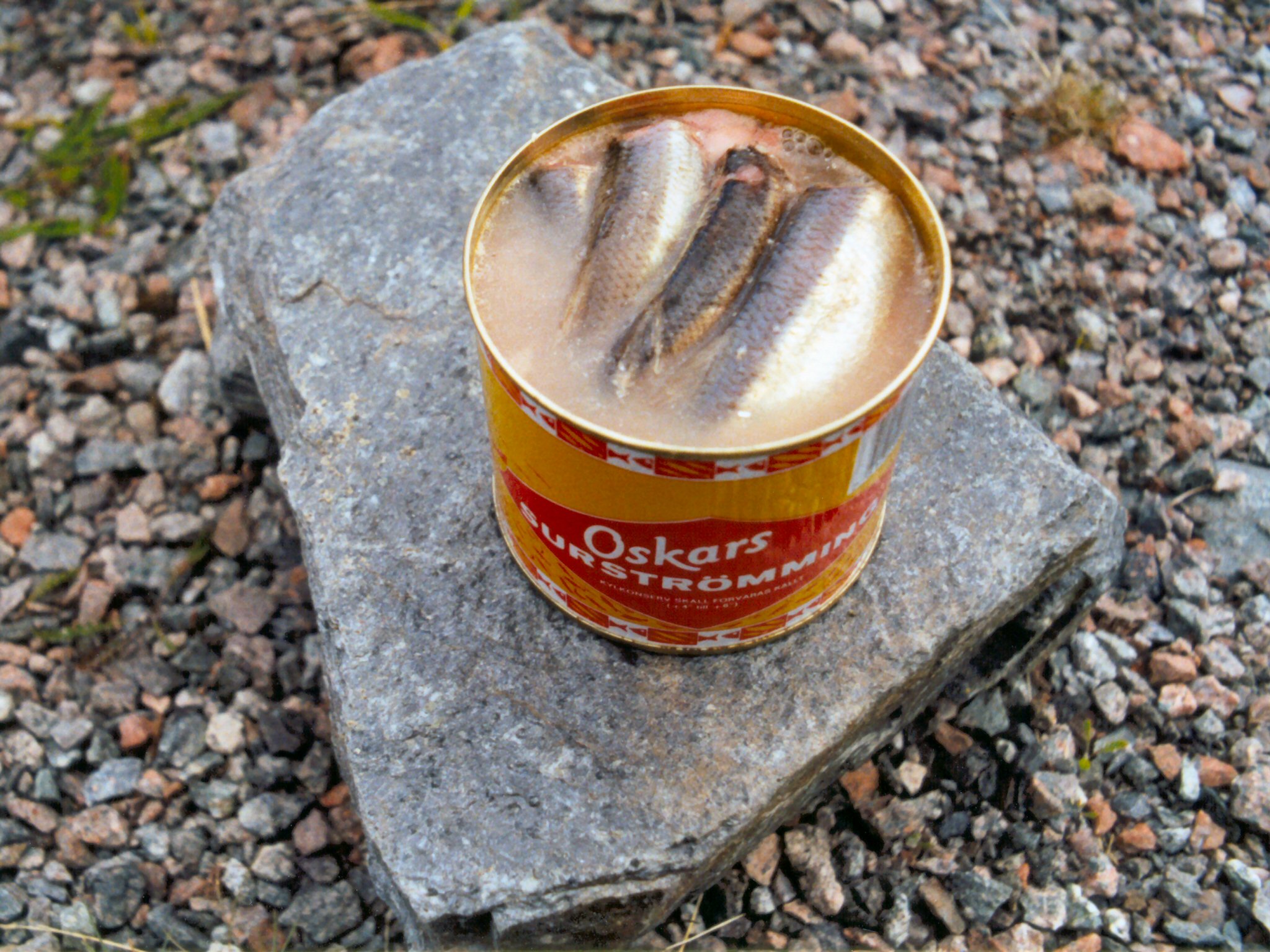 Surströmming (canned fermented Baltic herring) is caught in spring. It is fermented in barrels for one to two months, then tinned where the fermentation continues. Half a year to a year later, gases have built up sufficiently for the once cylindrical tins to bulge into a more rounded shape.
Surströmming (canned fermented Baltic herring) is caught in spring. It is fermented in barrels for one to two months, then tinned where the fermentation continues. Half a year to a year later, gases have built up sufficiently for the once cylindrical tins to bulge into a more rounded shape. -
Ålamörkret
Last but not least (well, it may be least, but we’ll get to the reason for that), the end of August, brings Ålagillen. “Ål” means eel and “gillen” doesn’t really translate into English, though we ought to have a word for it: It means something like “the chance to have a good time while eating and drinking.”
These parties are less demanding and can last into the autumn, perhaps weaning Swedes off the crustacean-filled holiday month as they ease back into the daily life of work and school in September. It starts as "ålamörkret sätter in" (the eel darkness sets in) toward the end of August, when the moon is on the wane and the nights are a little darker; the eel can no longer see the nets and thus get trapped on their way to the sea. They move in great numbers as they pass the southeast coastline of Sweden, fattened up for their long journey.
There may be less emphasis on eel parties because the eel population has been threatened, and fishing for them has been limited in the last decade. Since 2007, only licensed fishermen are allowed to fish for eel, and they have strict limits.
Perhaps ironically, nothing but eel is served to eat at ålagillen parties, though there may be as many as 10 or 12 varieties of fried, boiled, smoked and grilled eel with various kinds of stuffing. It’s quite fatty and rich in flavor, and snaps is often the drink of choice, though it may not be quite as common as with surströmming. -
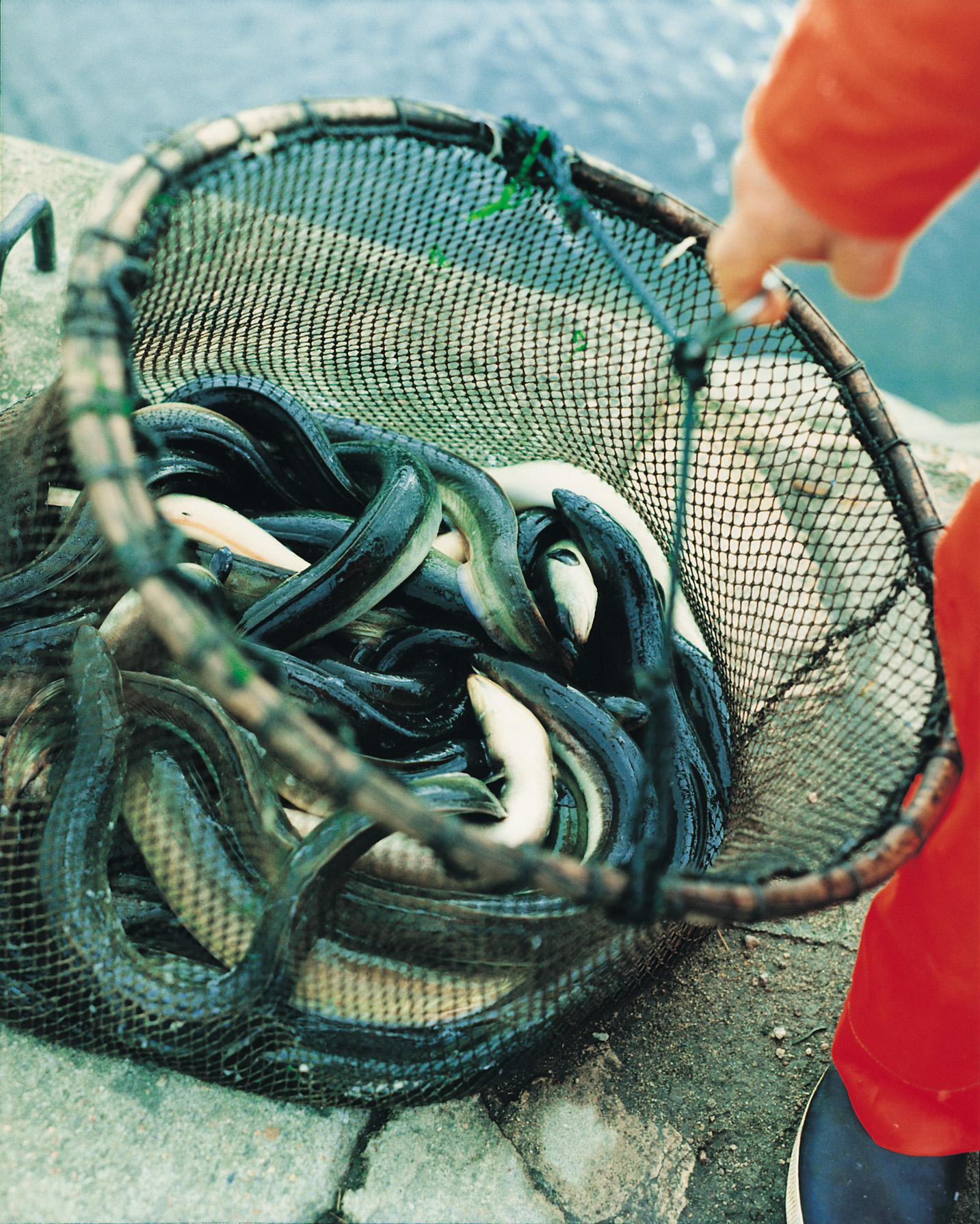 The eels during <i>ålamörkret</i> - the eel darkness of the fall season - are unable to see the nets and can be trapped on their way to the Sargasso Sea. Photography: Wolfgang Kleinschmidt.
The eels during <i>ålamörkret</i> - the eel darkness of the fall season - are unable to see the nets and can be trapped on their way to the Sargasso Sea. Photography: Wolfgang Kleinschmidt. -
We have never heard of an "ålagille" in North America, or a surströmming party — if anyone has, let us know. Kräftskivor, on the other hand, are abundant in the U.S. (See our events calendar to find a party near you or visit the nearest IKEA to set up your own.) If you are planning your own party in August, find all the ingredients you need by consulting our new apps at swedeninamerica.com and nordicinamerica.com.
-
-
